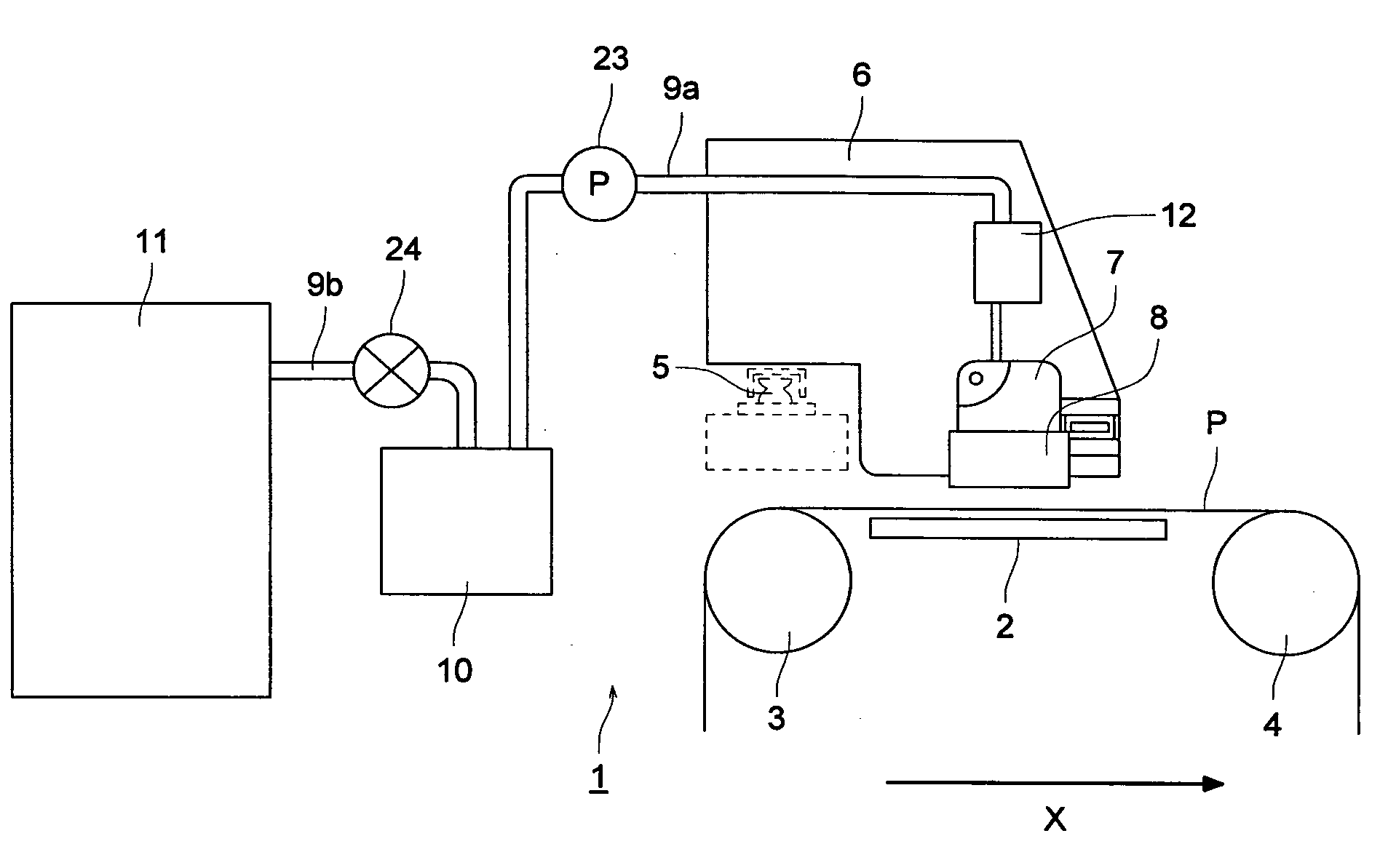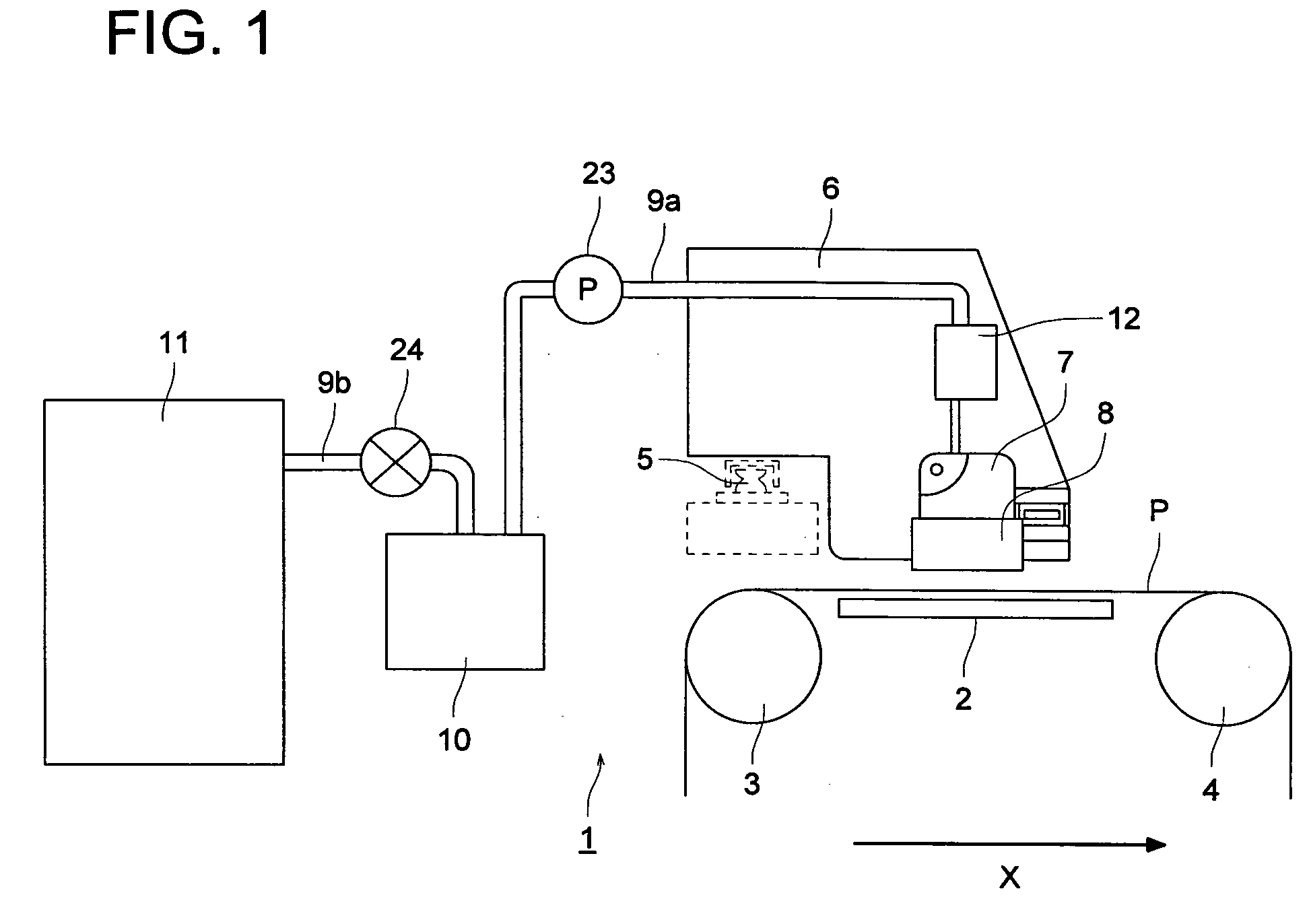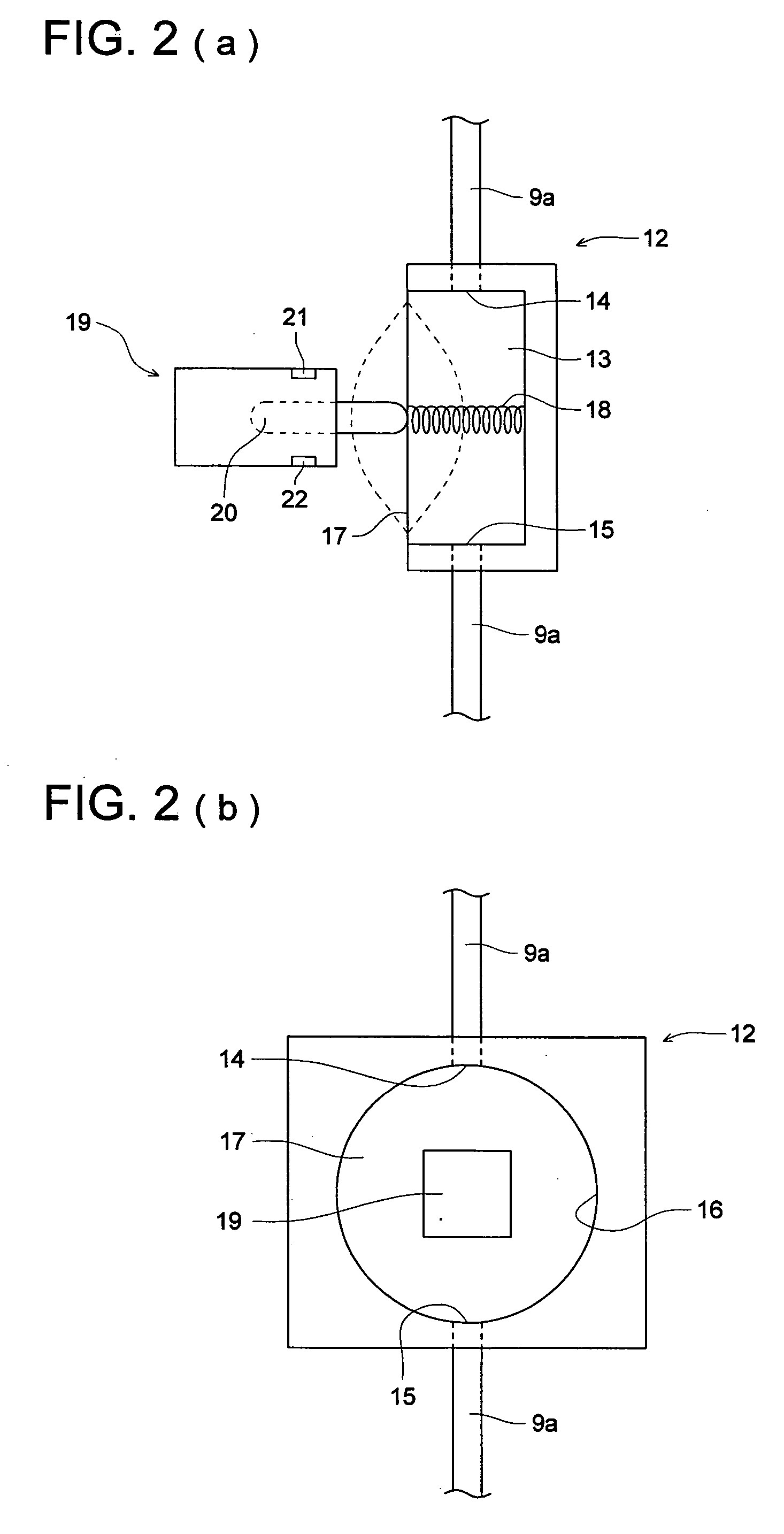Inkjet printer
a printer and inkjet technology, applied in the direction of printing, other printing apparatus, etc., can solve the problems of pressure loss in the structure of the inkjet printer becomes complicated, and the diameter or length of the ink supply pipe is difficult to realize, so as to achieve high quality, high viscosity, and high viscosity
- Summary
- Abstract
- Description
- Claims
- Application Information
AI Technical Summary
Benefits of technology
Problems solved by technology
Method used
Image
Examples
Embodiment Construction
[0042] The following is a description of the first embodiment of the inkjet printer of this invention with reference to the accompanying drawings.
[0043] First, as shown in FIG. 1, in the present embodiment, inkjet printer 1 is a serial print type inkjet printer, and this inkjet printer 1 has flat platen 2 which supports flat recording medium P on its non-recording side. Conveying rollers 3 and 4 which convey the recording medium P while keeping it at substantially the same height as the platen 2 are provided so as to be rotatable at the upstream side and the downstream side respectively of platen 2. Recording medium P is conveyed in prescribed conveyance direction X along the upper surface of platen 2 by recording medium conveying mechanism 30 (See FIG. 3) due to rotation of conveying rollers 3 and 4.
[0044] Rod-shaped guide rail 5 which extends in the main scanning direction which is perpendicular to conveyance direction X of recording medium P is provided above platen 2. Carriage...
PUM
 Login to View More
Login to View More Abstract
Description
Claims
Application Information
 Login to View More
Login to View More - R&D
- Intellectual Property
- Life Sciences
- Materials
- Tech Scout
- Unparalleled Data Quality
- Higher Quality Content
- 60% Fewer Hallucinations
Browse by: Latest US Patents, China's latest patents, Technical Efficacy Thesaurus, Application Domain, Technology Topic, Popular Technical Reports.
© 2025 PatSnap. All rights reserved.Legal|Privacy policy|Modern Slavery Act Transparency Statement|Sitemap|About US| Contact US: help@patsnap.com



